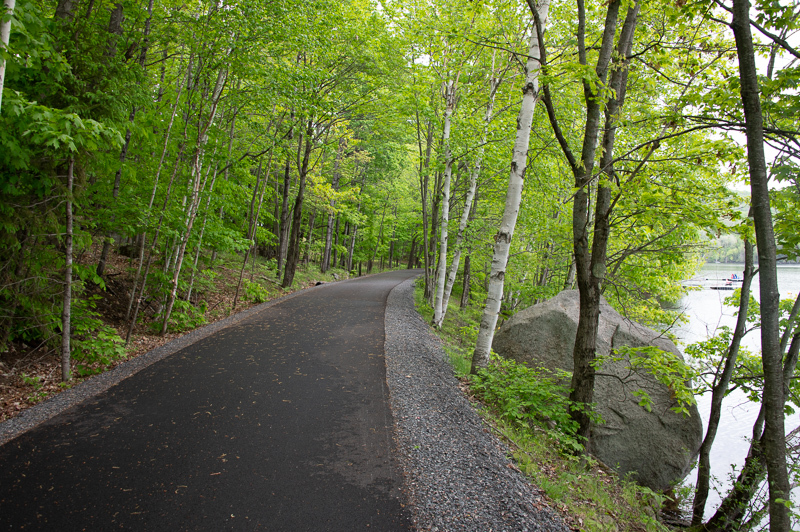Le P’tite Train du Nord
At the beginning of the month, we went off for a weekend to Mont Tremblant, a mountain resort about 85 miles/135km north-west of Montreal in the Laurentian mountains (a.k.a. the Laurentides). There were a lot of different aspects to the trip, and so as to keep things manageable, I’ll write about them separately.
The “city” of Mont Tremblant can be a little confusing at first, since it is actually the incorporation of several villages, towns, and resorts — some of which are referred to interchangeably as Mont Tremblant and their original names. So when one says “Mont Tremblant,” one could be referring to any or all of Saint-Jovite, Paroisse de Saint-Jovite, Mont-Tremblant village, Mont-Tremblant upper village or ski resort, the mountain itself, or even the town of Lac-Tremblant-Nord that was originally part of the incorporation but has subsequently split back away.

We took an early bus from Montreal that stops in the Saint-Jovite area. From there, a free community bus took us to where we stayed in Mont Tremblant Village (“Le Village” on the map above … not to be confused with the Upper Village, denoted by the little skier labeled “Tremblant”). Tout es clair?
Mont Tremblant Village, located on the banks of Lac Mercier, is an old town. The area had been part of the territory of the Weskarini Algonquins for thousands of year. The Europeans came into the area in the nineteenth century, a process which accelerated in the mid-to-late nineteenth century as part of the colonizing of “the Cantons of the North” by people looking for resources (especially lumber). By the late nineteenth century, tourism was also starting to be a draw to the area.
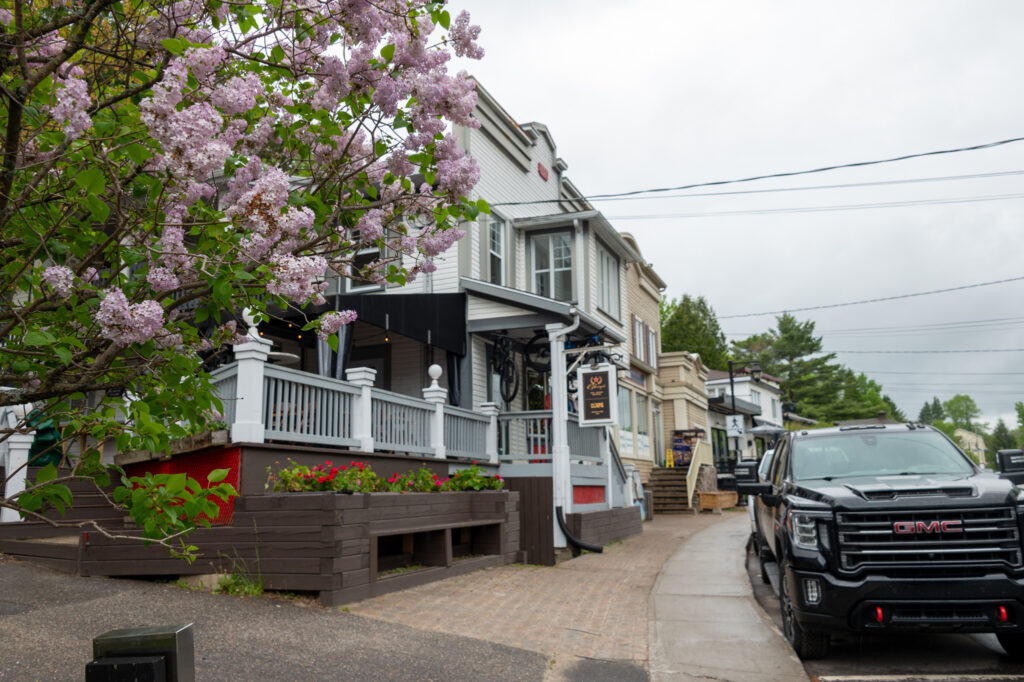
In the 1890s, a short railroad was built, taking people from Saint-Jérôme (a town already connected by rail to many neighboring cities) to Mont Tremblant and beyond. This line, known as the Le P’tite Train du Nord brought tourists to the area.
The railroad operated until the 1990s, when its right-of-way was converted into Parc Linéaire Le P’tit Train du Nord: a multipurpose recreational trail used by bikers, skiers, and walkers.
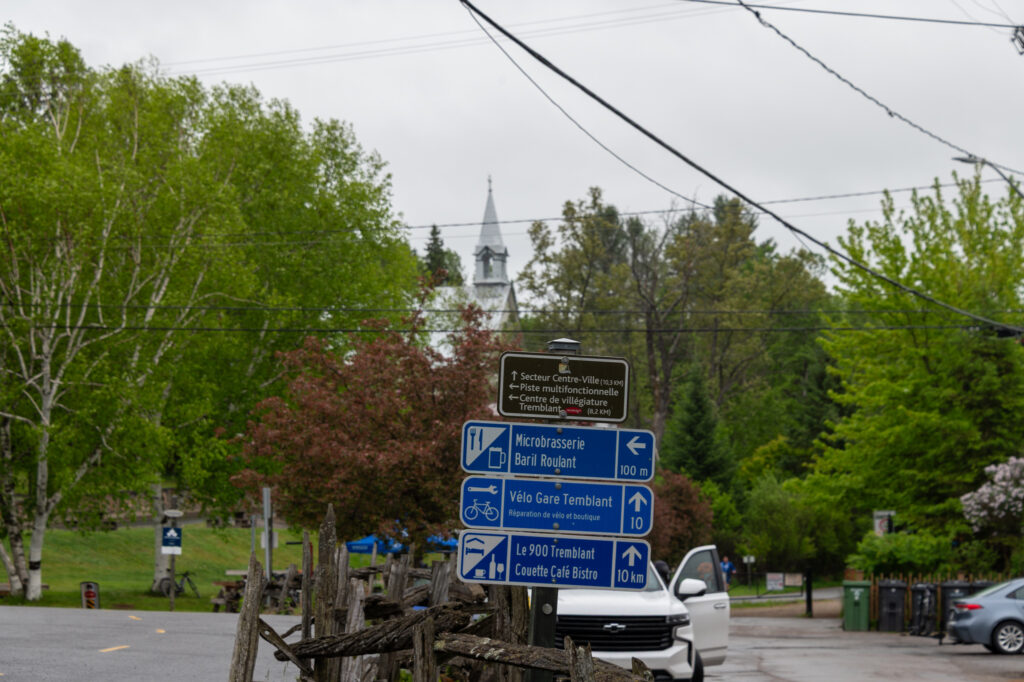
This has proven very popular. One can bicycle from town to town along the P’tite Train, taking in the beautiful scenery, getting good coffee at the cafes or dining at bistro pubs, and staying in hotels that have sprung up along the route.
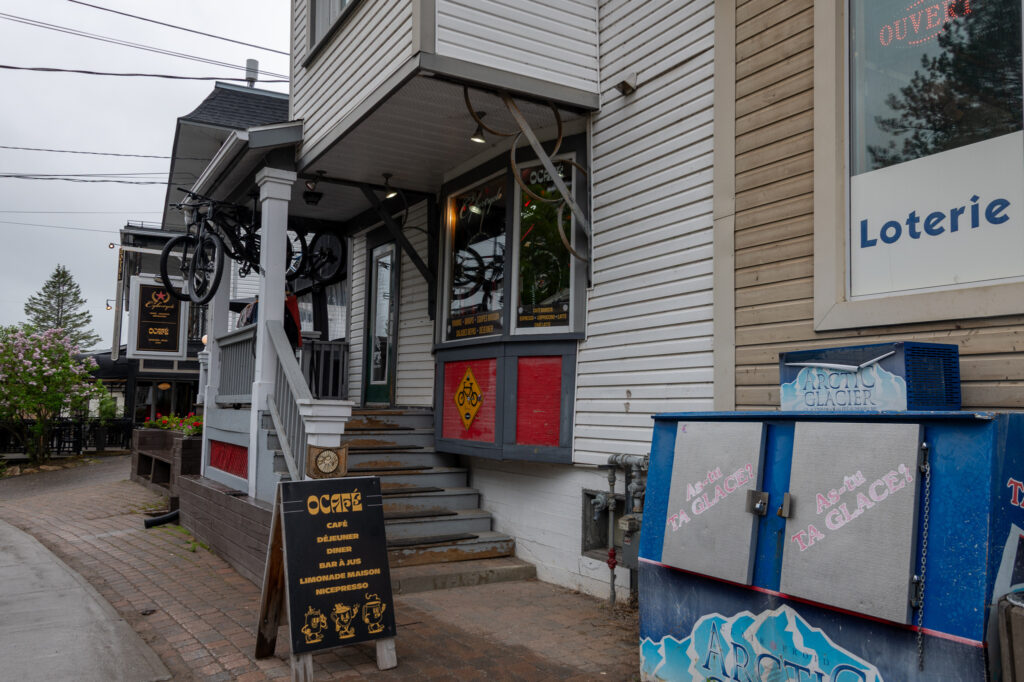
We partook of both the cafes and restaurants, even though we did not arrive by bicycle. The food was very good!


We were able to walk along bits of the path, which is well-marked and well-maintained.
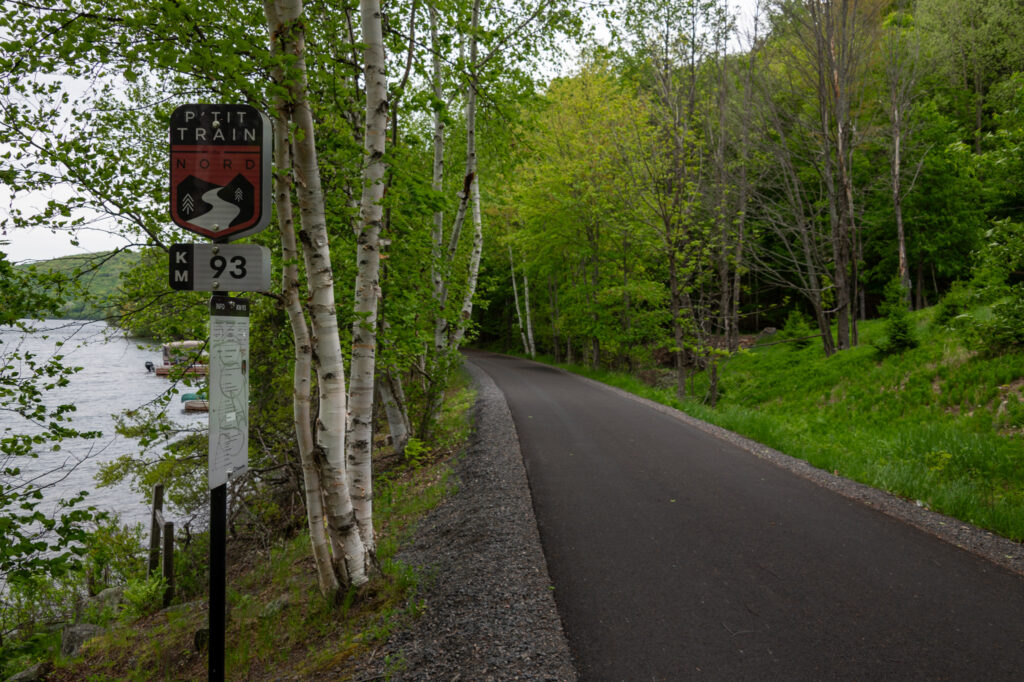
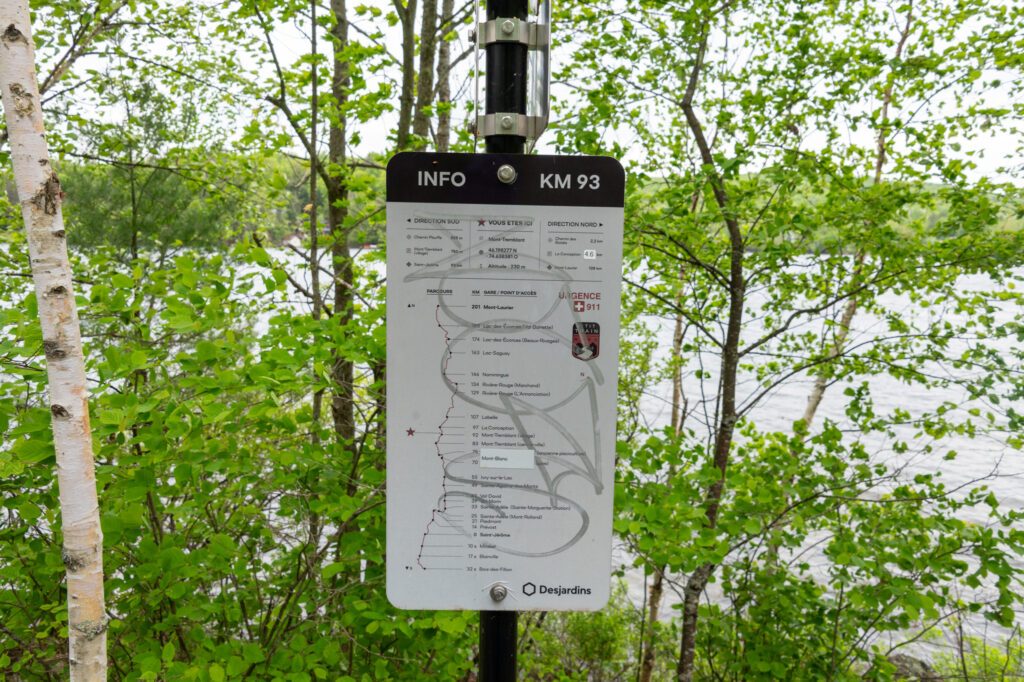
Thought it was cold and wet for June, this was not such a bad thing as it kept away the area’s legendary mosquitos.
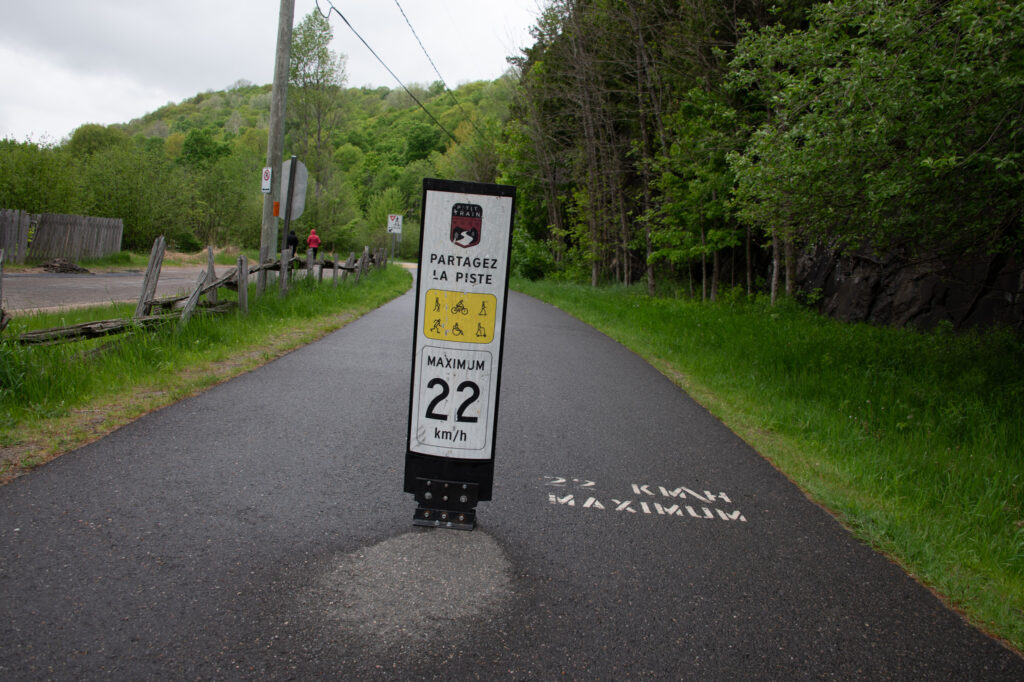
In the next installment, I’ll write a little about the ski resort.

